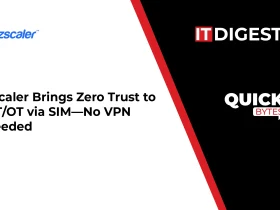The Platforms for Advanced Wireless Research (PAWR) Project Office announces the unveiling of new 5G research capabilities at POWDER, the National Science Foundation (NSF) PAWR testbed in Salt Lake City, Utah. The POWDER platform has implemented open source 5G software on top of its outdoor radio network. The deployment makes it possible for researchers of all types to experiment with a live network and innovate in ways designed to unlock the full potential of advanced 5G and beyond technologies.
While traditional commercial networks use proprietary and integrated hardware and software, there is increasing demand for more open networks to enable faster innovation and a more competitive market. The research community will play a critical role in this evolution. Through investments in the development and implementation of open network architectures, research platforms can provide access to elements of communications systems that were previously inaccessible. This availability allows more people to work on improving network technologies. It also provides an opportunity to accelerate the transition of high-impact research results into the broader commercial sphere.
Also Read: DMI Announces Acquisition of Simplex Mobility
The POWDER platform has implemented open source 5G software on top of its radio network for Open RAN experimentation.
“We are pleased to see the expansion and impact of our NSF-funded PAWR program in Salt Lake City. We expect researchers and scientists not just from Utah, but across the country, to engage with the POWDER platform in the pursuit of a common open platform that will truly enable the adoption of 5G wireless and edge technologies for our Nation and beyond,” said Margaret Martonosi, Assistant Director at the U.S. National Science Foundation.
The new offering from POWDER combines software defined radios (SDRs), equipped with a custom designed radio frequency (RF) frontend, with an implementation of the open source OpenAirInterface (OAI) 5G software stack. The RF frontend operates in CBRS spectrum, but is designed in a modular manner to be easily extended to make use of other spectrum ranges. The POWDER 5G capabilities come layered on top of a sophisticated resource management platform and include access to backhaul connectivity, a variety of compute resources, and common-off-the-shelf (COTS) 5G devices or user endpoints (UEs), some of which are deployed on campus shuttles to enable mobility experiments.
“We are very pleased to make these open source over-the-air 5G capabilities available to users of the POWDER platform,” said Kobus Van der Merwe, Jay Lepreau professor in the Kahlert School of Computing at the University of Utah and Director of the POWDER platform. “These capabilities will enable researchers to experiment with 5G and beyond technologies and concepts, while grappling with the challenges of doing so in a real-world environment. Our goal with POWDER is to provide our users with an array of building blocks that can be easily composed into sophisticated experiments, so researchers can focus on the science questions they are interested in.”
“Expanding access to research capabilities has always been a priority of the PAWR program, and it is uniquely challenging in the context of wireless networking,” said Mari Silbey, PAWR Program Director. “The POWDER team has worked at the frontiers of both programable hardware and open source software development to create an advanced research environment. As a result, they have launched one of the only testbeds in the country with an outdoor, over-the-air, fully programmable 5G network. It is remotely accessible and offers an invaluable resource to researchers across the academic, government, and private sectors.”
SOURCE: PR Newswire


































